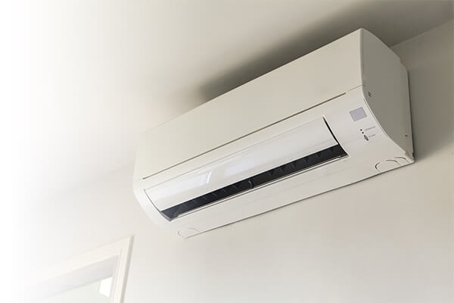If you are looking for a new air conditioning and heating system, you may be asking yourself “What is the most efficient system in the market?” But in the process of buying one, you will encounter numerous energy efficiency ratings listed on the units.
Efficiency standards for all heating and cooling units manufactured in the United States are governed by the Department of Energy. Since as much as half of the energy used in homes throughout the country goes to cooling and heating, it helps to consider products with high-efficiency ratings.
Common Types of HVAC Ratings
There are generally four types of ratings: SEER, EER, AFUE, and HSPF. Keep in mind, higher ratings mean lower operating costs, as well as higher price tags.
SEER (seasonal energy efficiency ratio) indicates the electrical input necessary to run the air conditioning unit over one average cooling system, in comparison to how much cooling the system generates. This rating is assigned based on an average, lower temperature of 82 degrees. It is important to understand that a 16-SEER air conditioner achieves this rating within this temperature range, but not at higher temperatures.
On the other hand, EER (energy efficiency ratio) is tested based on higher operating temperatures, often 95 degrees or higher. This rating considers humidity removal, and it is useful since it shows how an air conditioner performs under maximum cooling load.
Remember that an air conditioner with a high SEER rating won't’ necessarily also have a high EER rating, so consider both ratings in making your purchase. While EER measures a moment in time, SEER measures usage over time. Hence, SEER represents a more important number in regards to long-term energy usage.
As far as furnaces are concerned, they are rated by AFUE (annual fuel utilization efficiency) ratio, which is the percentage of heat produced for every dollar of fuel consumed. Similar to the miles-per-gallon rating on your motor vehicle, the higher the AFUE rating, the lower your fuel costs.
HSPF stands for “heating season performance factor.” Similar to SEER, it is a rating that measures the efficiency of the heating portion of heat pumps.
Choosing the System That’s Right for Your Home
When it comes to making a final decision, you need to take into account the size of your home, your heating and cooling needs, the climate in your area, your budget, available tax credits, and the advice of an HVAC professional. The last thing you want to do is invest in a quality system that simply isn’t right for your home.
Once you choose which type of system will work for you, compare models and pay attention to the ratings mentioned above. The best options are Energy Star certified and recommended. The right system will enable you to save money monthly and maintain the ideal home temperature without wasting energy.
If you are interested in making an appointment with a member of our Glendale HVAC team, please reach out to Moe Plumbing Services. We also offer maintenance membership plans to help you save money!

